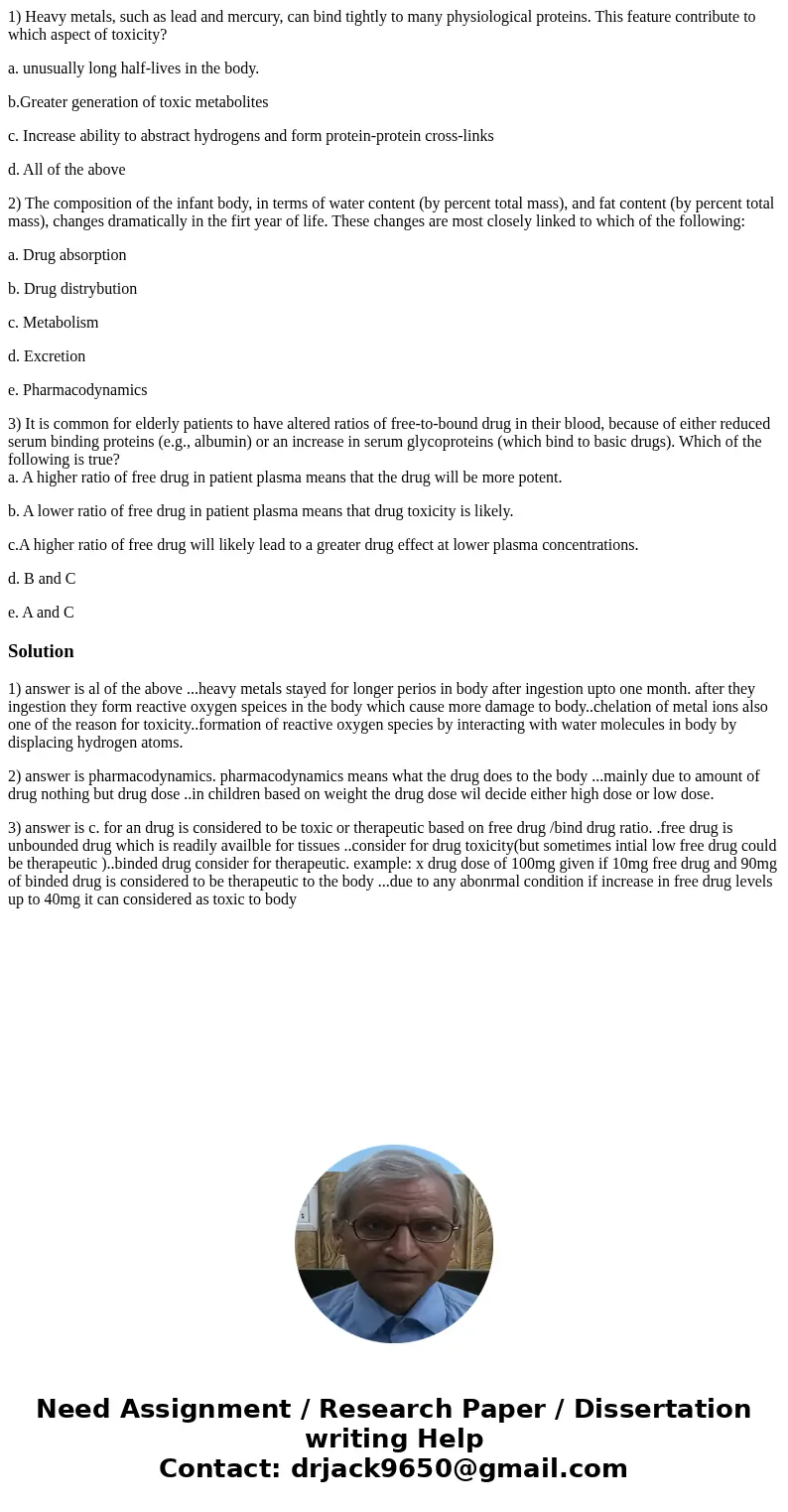1 Heavy metals such as lead and mercury can bind tightly to
1) Heavy metals, such as lead and mercury, can bind tightly to many physiological proteins. This feature contribute to which aspect of toxicity?
a. unusually long half-lives in the body.
b.Greater generation of toxic metabolites
c. Increase ability to abstract hydrogens and form protein-protein cross-links
d. All of the above
2) The composition of the infant body, in terms of water content (by percent total mass), and fat content (by percent total mass), changes dramatically in the firt year of life. These changes are most closely linked to which of the following:
a. Drug absorption
b. Drug distrybution
c. Metabolism
d. Excretion
e. Pharmacodynamics
3) It is common for elderly patients to have altered ratios of free-to-bound drug in their blood, because of either reduced serum binding proteins (e.g., albumin) or an increase in serum glycoproteins (which bind to basic drugs). Which of the following is true?
a. A higher ratio of free drug in patient plasma means that the drug will be more potent.
b. A lower ratio of free drug in patient plasma means that drug toxicity is likely.
c.A higher ratio of free drug will likely lead to a greater drug effect at lower plasma concentrations.
d. B and C
e. A and C
Solution
1) answer is al of the above ...heavy metals stayed for longer perios in body after ingestion upto one month. after they ingestion they form reactive oxygen speices in the body which cause more damage to body..chelation of metal ions also one of the reason for toxicity..formation of reactive oxygen species by interacting with water molecules in body by displacing hydrogen atoms.
2) answer is pharmacodynamics. pharmacodynamics means what the drug does to the body ...mainly due to amount of drug nothing but drug dose ..in children based on weight the drug dose wil decide either high dose or low dose.
3) answer is c. for an drug is considered to be toxic or therapeutic based on free drug /bind drug ratio. .free drug is unbounded drug which is readily availble for tissues ..consider for drug toxicity(but sometimes intial low free drug could be therapeutic )..binded drug consider for therapeutic. example: x drug dose of 100mg given if 10mg free drug and 90mg of binded drug is considered to be therapeutic to the body ...due to any abonrmal condition if increase in free drug levels up to 40mg it can considered as toxic to body

 Homework Sourse
Homework Sourse